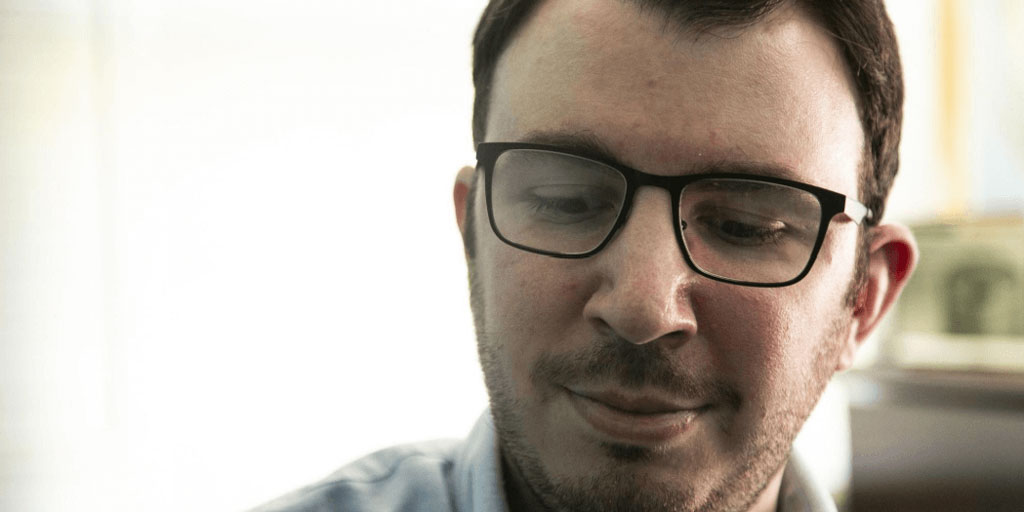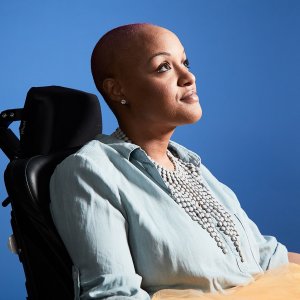
Spotting Neuromuscular Disease in Adults
By Shaila Wunderlich | Tuesday, July 13, 2021
After years of denial, it was the stairs to his second-floor college apartment that forced Chris Anselmo to finally face his limb-girdle muscular dystrophy (LGMD) in 2009. “I remember moving in, trying to carry things like my desk chair to the top of the stairs, and just feeling completely weak and exhausted by the time I reached the top,” he says.
Chris’ diagnosis came four years earlier, after a car accident necessitated bloodwork and X-rays. A senior in high school at the time, Chris’ lack of symptoms and youthful mindset allowed him to compartmentalize the information. “My pediatrician said it could be years before I noticed anything,” Chris says. “And when you’re 18, ‘years’ feels like another universe.”
Now a set of stairs was making his LGMD impossible to ignore — and leading him to reexamine past incidents. “I recalled how months earlier, I hadn’t been able to finish my usual run,” he says. “I wasn’t physically tired, really, but I felt too weak to lift my feet. I couldn’t take another step.”
First signs and symptoms
Chris’ diagnostic journey was a matter of confirming and facing what he already knew. For many adults, the first signs of neuromuscular disease typically show up as weakness in the limbs and extremities and insufficient recovery from injuries.

Keisha Greaves
For Keisha Greaves, 35, the first signs of LGMD occurred in her mid-20s. She noticed her right leg becoming weaker and sometimes giving out when she was walking. “I just brushed it off thinking I needed to exercise,” she says.
She went to the doctor after her leg gave out at the grocery store. “I fell down in the parking lot, and I was dead weight; I couldn’t get up,” she says. This made her realize the problem was more than a lack of exercise — for a long time, she had been unconsciously avoiding putting her full weight on her weak leg.
In their earliest forms, symptoms are frequently mistaken for more common conditions associated with other health problems or aging. “Neuromuscular disease can look like carpal tunnel syndrome, diabetic peripheral neuropathy, or arthritis of the back,” says Janna Knickerbocker, OT/L BCPR, an occupational therapist.
Janna sees neuromuscular disease patients at least once a month at the MDA Care Center at Memphis’ Methodist North Hospital. The rest of the time she works in the hospital itself, and there she sometimes recognizes early neuromuscular disease symptoms masquerading as other conditions. “People experiencing trouble with their limbs will come in saying, ‘I have diabetic peripheral neuropathy,’” Janna says. “And I will say, ‘Yes, but that shouldn’t cause difficulty in lifting your arms over your shoulders, swallowing, or catching your breath after walking across the room.’”
Aging can mask neuromuscular disease signs, particularly when it comes to stiffness, fatigue, and wear and tear. “The average age of onset for amyotrophic lateral sclerosis (ALS) is in the 50s,” says Kim Carter, PT, ScDPT, a physical therapist at Wesley Neurology Clinic in Tennessee. “Well, you’ve lived some life by your 50s. Especially if you’ve spent years working in a physical job — like a bricklayer or construction worker — issues like weakness become easier to dismiss.”
Pay attention to recovery
Lags or inconsistencies in recovery from injuries or surgery can be signs of neuromuscular disease and warrant looking into. According to Janna, common scenarios that could indicate neuromuscular disease include, “patients who have had one or more surgeries for carpal tunnel, and yet their grip strength hasn’t returned. Or they’ve had multiple back surgeries, but their symptoms haven’t improved — and new symptoms have popped up.”
“Recovery from surgery comes with certain protocols,” Kim says. “At certain points following a surgery, you should be able to perform certain things. If you cannot, you should let your doctor know.”
Speak up
The more in-tune you are with your body, the more likely you are to notice when something’s off. Athletes and physically active folks, for instance, are usually quick to pick up on nuances in their musculoskeletal condition. “Runners or people who practice yoga will say things like, ‘I can’t do this pose anymore,’ or ‘Suddenly I can’t put as much weight on this foot as I can on the other,’” Kim says.
If you notice weakness in your limbs or have trouble recovering from an injury or medical procedure, it’s always a good idea to talk with your doctor about it. This is especially important if you have a family history of neuromuscular disease. Also, consider consulting with a neurologist or neuromuscular disease specialist, and ask about genetic testing.
“The great thing about knowing early is you can begin planning,” Janna says.
Related article: Early Warning Signs Help Spot Neuromuscular Disease in Children
To learn about genetic testing options and how to find an MDA Care Center provider, contact the MDA Resource Center at (833) ASK-MDA1 or ResourceCenter@mdausa.org.
Disclaimer: No content on this site should ever be used as a substitute for direct medical advice from your doctor or other qualified clinician.




